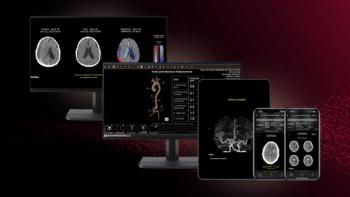
PET/MRI in Primary Staging of Laryngeal Cancer
Examination with PET/ MRI for patients with laryngeal cancer.
Imaging with PET/MRI is useful for primary staging of laryngeal cancer, according to a study in the
Researchers from Italy sought to assess the clinical impact of PET/MRI examination on patients with histologically proven laryngeal cancer, and their staging and treatment planning.
Sixteen patients underwent whole body PET/CT followed by a dedicated head/neck PET/MRI. Two blinded groups evaluated the data: metabolic (SUV and MTV), diffusion (ADC) and perfusion (Ktrans, Ve, kep, and iAUC) maps were obtained by positioning regions of interest (ROIs). Tumoral local extension assessed on PET/MRI was compared to endoscopic findings.
The results showed a good interobserver agreement in anatomical location and local extension of PET/MRI lesions. “PET/CT SUV measures highly correlate with ones derived by PET/MRI (eg, pâ =â 0.96 for measures on VOI),” the authors wrote. “Significant correlations among metabolic, diffusion and perfusion parameters have been detected.” The researchers noted that PET/MRI had a relevant clinical impact, confirming endoscopic findings (six cases), helping treatment planning (nine cases), and modifying endoscopic primary staging (one case).
The researchers concluded that use of PET/MRI in primary staging of laryngeal cancer allowed simultaneous collection of metabolic and functional data and conditioning the therapeutic strategies.
Newsletter
Stay at the forefront of radiology with the Diagnostic Imaging newsletter, delivering the latest news, clinical insights, and imaging advancements for today’s radiologists.




























